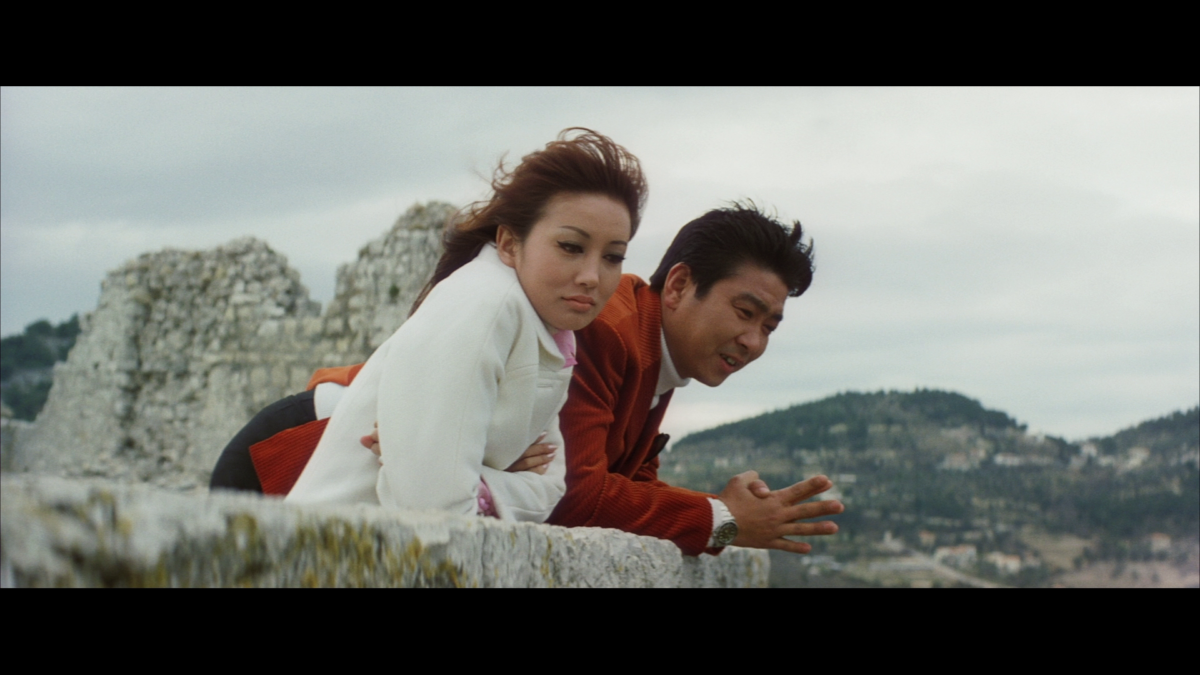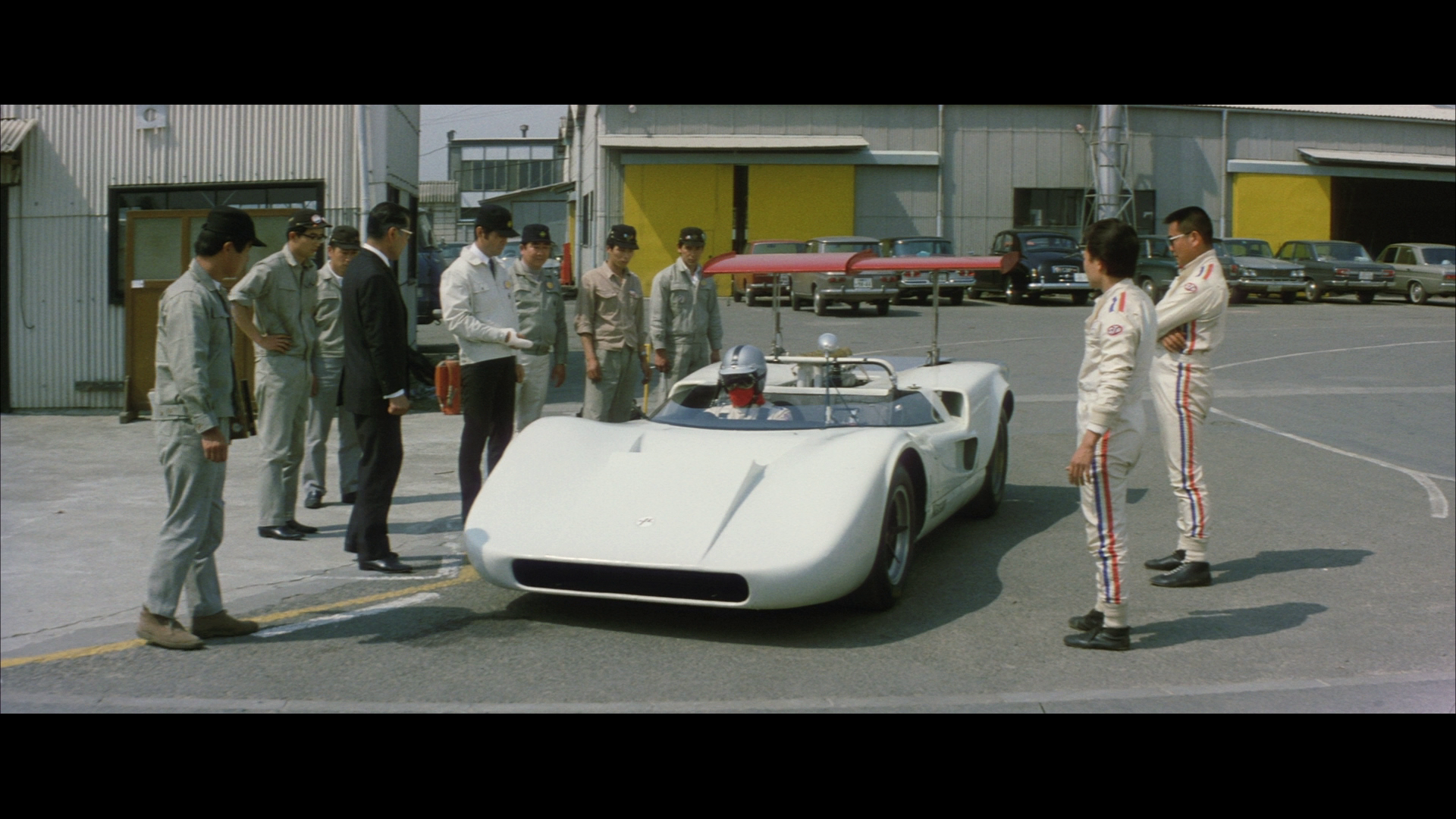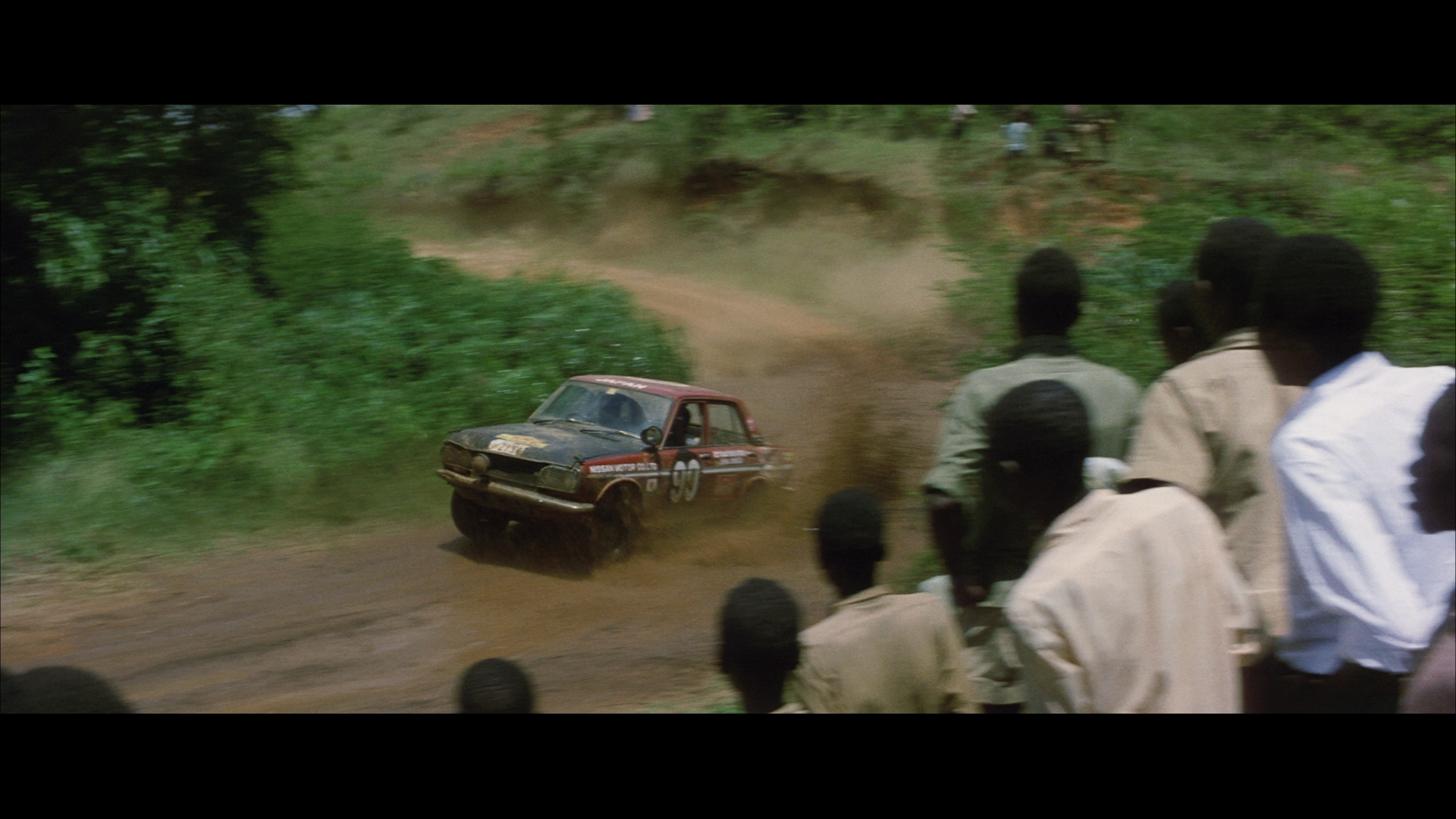Last Updated on January 23, 2021 by rob
In dangerous winter weather an obsessive rally driver named Godai (Yujiro Ishihara) narrowly avoids death after a disastrous shunt during the Monte Carlo race. After recovery Godai sets his sights on the big African rally in which he’ll compete with his old adversary and best friend Pierre (Alain Cuny). But as Godai begins training the wives of both men (Ruriko Asaoka and Emmanuelle Riva) grow increasingly unhappy at both the gypsy lifestyle and the strain of not knowing if their men will come back alive and discuss leaving their husbands even as the big race begins.
Nikkatsu’s answer to Frankenheimer’s Grand Prix. An impressive international cast comprising Yujiro Ishihara, Ruriko Asaoka, Emmanuelle Riva, Alain Cuny, Jean-Claude Droudot, Tatsuya Nakadai and Toshiro Mifune star in this 3 hr epic, complete with its own intermission in which a so-so script is elevated by outstanding physical production. Very much of its time in trying to get Japanese stars into international settings, Safari 5000 is an effective hybrid of race track and rally action with the usual soap opera-ish subplots taking second place to the action as anxious wives and girlfriends fret about their men.
And some of the cars on show here are quite spectacular. Ishira and company are filmed on location at actual rallies, mingling amongst huge crowds of spectators and seemingly participating in the races. It’s as if the film crew are shooting their footage with the actors right alongside the real drivers, races and pit stops. None of the stars are seen here in car sets on a studio soundstage emoting in front of a back projection screen. It’s all done across a variety of spectacular European and African locations so the overall effect is completely convincing, especially in the movie’s second half, given over almost wholly to the African rally.
Less successful is a script that features the usual cliches of hard driving, hard drinking men while annoyingly squandering the talents of its two luminous female stars (Asaoka made a number of films with Ishihara and she was terrific in the splendid Red Handkerchief) but her and Riva’s role as the unhappy wives are so insipidly written that a couple of sub-plots set up in the film’s first act in which Asaoka goes off with a French fashion designer are simply outrageously abandoned shortly after. If I tell you that the highlight of Asaoka’s presence in the film’s second half is presenting her husband with a hand-knitted jumper to keep him warm(!) you get a sense of just how short-changed the female roles are.
But even if the characters are a bit thin the film evokes a real sense of camaraderie between the men at the centre of the action and conveys the appeal of this adrenaline fuelled lifestyle so well that you can understand why its characters are as committed to it as they are. With vivid widescreen cinematography (Kurahara gets some moodily evocative shots of Ishihara and co as they drive across Africa) a good pace and a strong score from Toshiro Mayuzumi, there’s oodles of documentary-style footage of behind-the-scenes prep and on the road action that’ll warm the heart of any petrolhead. And the climax, as Ishihara and Cluny end up in a neck and neck race to the finish line is quite compelling. This was the number one box office hit in Japan in 1969 only for the film to then vanish off the face of the earth for over 40 years due to unspecified copyright issues. What those issues were goodness knows but thankfully they seem to have been resolved now.



